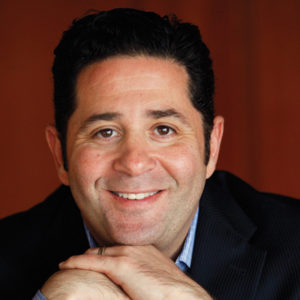For some time now the social marketing campaigns of most brands have consisted of scheduling out loads of content through Buffer or another social management tool and letting it run. Kevan Lee, Director of Marketing at Buffer says your promotions, blog posts, and podcast episodes are undoubtedly filled with valuable insights, but a shift is taking place in the social media world that demands you modify your strategy. Users of social media – the very ones you’re trying to reach – are valuing the “social” part of social media more than the “media” part. In short: Engagement matters more than publication.
What does that mean for a brand? It means a new approach to social media is in order. To help us get our heads around what exactly that means, Drew recorded this conversation with Kevan and discussed the shifting social media landscape, how social marketing campaigns of the past must give way to genuine transparency and engagement, and how small to medium-sized businesses can do social right.
Sounds intriguing, don’t you think? Be sure you listen (click here to listen now.)
Subscribe on Apple Podcasts – Stitcher – or Podsearch
What You’ll Learn
- [0:30] Why hell hath no fury like a social detractor and why businesses need to use it effectively to listen, learn and engage.
- [1:50] Kevan and the team at Buffer work in a fully remote team environment
- [3:00] The reason Kevan believes writing is vital for marketers to learn
- [4:26] The changes that have happened in the social media world: engagement matters more than publishing
- [6:19] How the Buffer team markets Buffer through engagement: No ROI for social
- [10:26] What does it mean to be “on brand” – the Buffer approach
- [14:59] Brands that have been using social media effectively these days
- [20:24] The biggest mistakes Kevan sees brands making on social
- [24:33] Buffer’s transparency ethic and how it impacts their planning and engagement
- [32:13] Kevan’s advice for medium-small businesses when it comes to social
Most social media activity is crap simply because brands feel they HAVE to schedule something to publish. Try on a new social marketing approach: Be active, be on brand, be engaged
As Drew and his guest, Kevan Lee, of Buffer spoke about current social media trends, Drew pointed out how much of what’s out there is the epitome of irrelevance. Most brands are guilty of adding to the noise instead of adding to the conversations already happening on social. Kevan responded by saying that a good social campaign these days involves being active (and he’s got an interesting definition of what that means), being “on brand,” and being engaged. In this conversation, he shares clear explanations of how a small to medium sized company can pull off each of those 3 elements of effective social, so don’t miss this conversation.
If you don’t have something meaningful to say in a week’s time, your brand has bigger problems
The biggest part of being a brand that adds true value on social media is to only post things that are truly relevant and valuable. But because the “old way” of doing social marketing insisted that companies fill up their channels with content (relevant or not), many in the marketing department are scratching their heads about what it means to be truly meaningful. Kevan Lee, Director of Marketing at Buffer says if you don’t have something meaningful to say in a week’s time, your company has a bigger problem than you realize. Find out what he means by that statement and how he proposes companies adjust their social media strategy on this episode of Renegade Thinkers Unite.
Be among the 20% of brands who actually respond to mentions on social media
Engagement matters on social media, especially for companies. But Kevan Lee points out that only 20% of companies these days even respond when they are tagged or mentioned on social. It’s unthinkable when you realize that the person who tagged your company is likely a customer or prospect – the very people you’re looking to reach. So naturally, the most obvious thing you can do to increase the effectiveness of your social marketing is to be among the 20% of brands that monitor your social accounts and respond when you’re mentioned. Start a conversation, engage, solve problems. That’s the “social” part of social media, and it works.
Connect With Kevan
- Kevan’s profile on the Buffer page
- Connect with Kevan on LinkedIn
- Follow Kevan on Twitter
- Follow Kevan on Facebook
Resources & People Mentioned
- Dogs in Politics Day
- National Blueberry Popsicle Month
- Mailchimp
- Red Bull
- GoPro
- Product Hunt
- The Seattle Times
- HARO – Help A Reporter Out
- Google Analytics
- Facebook Insights
- Ted Rubin – “There’s no ROI on ignoring”
Connect with Drew
- http://renegade.com/
- On LinkedIn
- On Twitter
- On Facebook
- On Instagram
Subscribe on Apple Podcasts – Stitcher – or Podsearch


